
Victor Hawthorne
About the Author
Victor Hawthorne is a 40-year-old numismatist from Buffalo, New York. He discovered his first rare coin at age seven. That moment sparked a lifelong passion. He studied history at State University. He graduated with honors.
After college, he joined a local museum as a curator assistant. He cataloged ancient coins. He preserved them properly. He then moved to a top auction house. He mastered grading and valuation.
Today he has over fifteen years of professional experience. He speaks at numismatic conferences around the world. He writes regular articles for leading journals. He advises collectors on building valuable collections. He still hunts rare and unique coins.
Connect with Victor:



Introduction
The Indian Head, or Buffalo, nickel first entered circulation in 1913. Designer James Earle Fraser based its obverse portrait on a composite of Native American leaders and its reverse on an American bison. The striking imagery broke from traditional coin designs and captured public imagination.
Collectors prize this series for its bold artwork and historical context. Many seek key dates and mint mark varieties to complete collections. The nickel’s link to frontier heritage and Native American culture makes it a lasting favorite among U.S. numismatists.
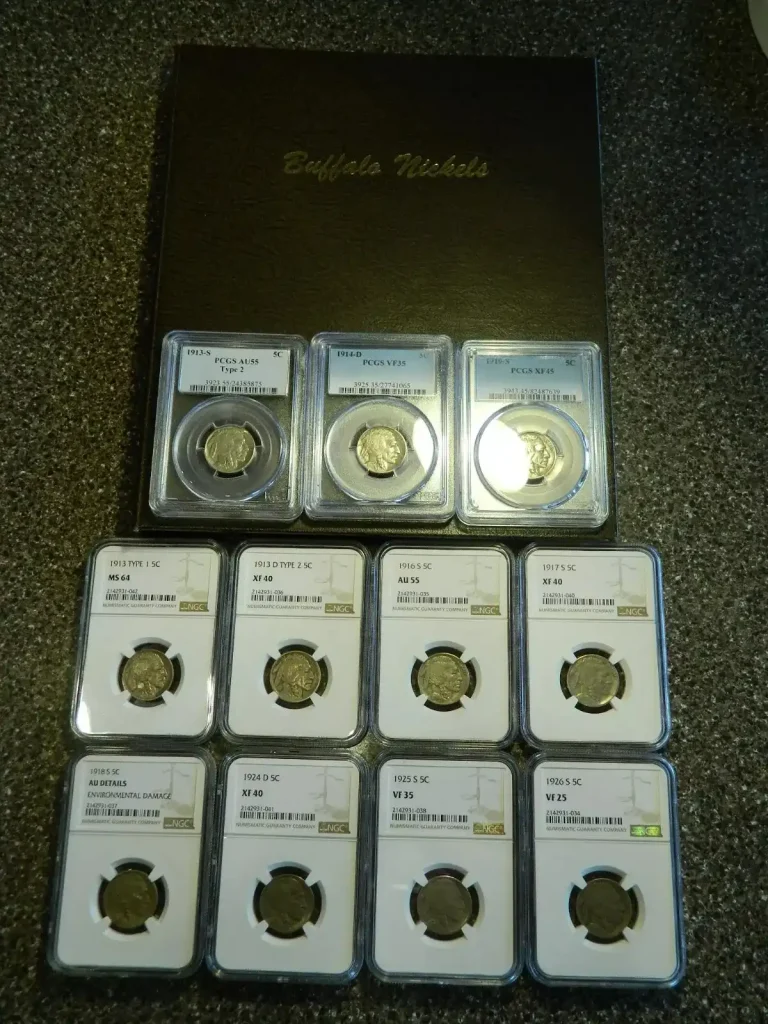
Key Factors That Determine Value
Understanding value starts with recognizing the main traits collectors prize. Each factor affects market demand and pricing. You can use these criteria when evaluating any Indian Head issue.
Knowing these key points helps you spot rare finds and avoid overpaying. Apply them to every date, mint mark, and condition to make smarter buying and selling decisions.
Date & Mint Mark
Collectors gauge the value of Indian head buffalo nickel by focusing on date and mint mark. Key dates like 1913-S, 1926-S, and the 1937-D three-legged variety top price charts. These issues trade for significant premiums due to low production and strong collector demand.
Always check the mint mark’s style and placement carefully. San Francisco “S” strikes and Denver “D” strikes each carry distinct premiums. Even small variances in mintages can affect a coin’s market appeal.
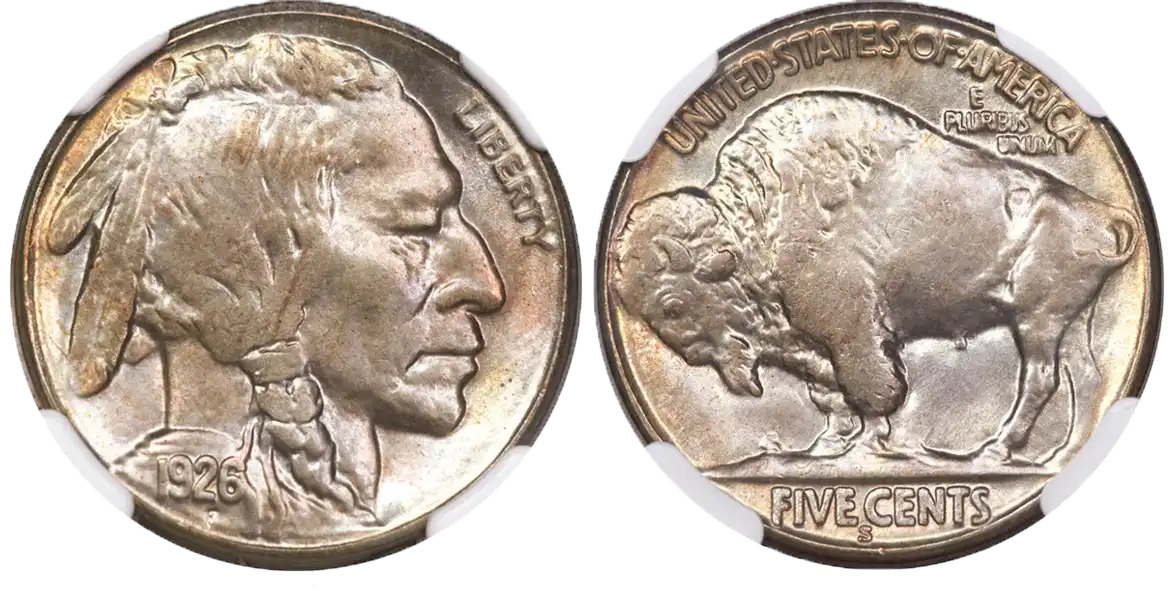
Condition
A coin’s state defines its rarity and appeal. Uncirculated examples show full detail, crisp rims, and original luster. Collectors pay handsomely for such well‐preserved pieces.
Worn coins trade near face value or modest premiums at best. Examine your piece under bright light to gauge wear on high points. That inspection helps you assign an accurate grade.
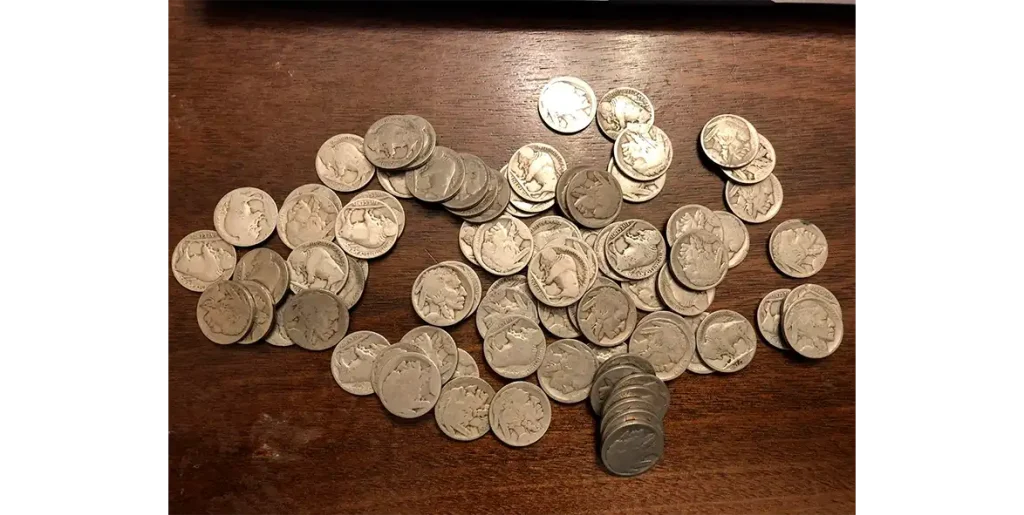
“Full Horn” Detail
Inspect the bison’s horn to assess die detail and handling. A fully separated horn indicates a strong strike and careful circulation. Coins with clear horn relief often fetch higher bids.
Worn or merged horns signal heavy use. Such pieces can lose half their potential value. Always use magnification to confirm the horn’s separation from the head.
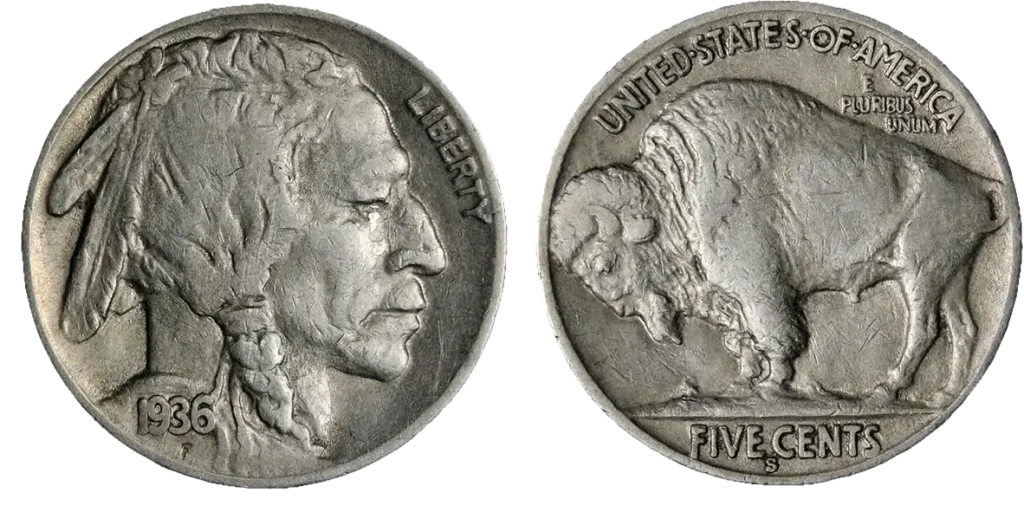
Strike Quality
A crisp strike brings sharp design elements to life. Coins struck with full pressure reveal fine fur lines and strong relief. Collectors prefer these examples for eye appeal.
Weak strikes leave details soft or incomplete on high points. Denver and San Francisco mint runs sometimes show low-pressure strikes late in production. Identifying strike strength ensures you avoid undervalued purchases.
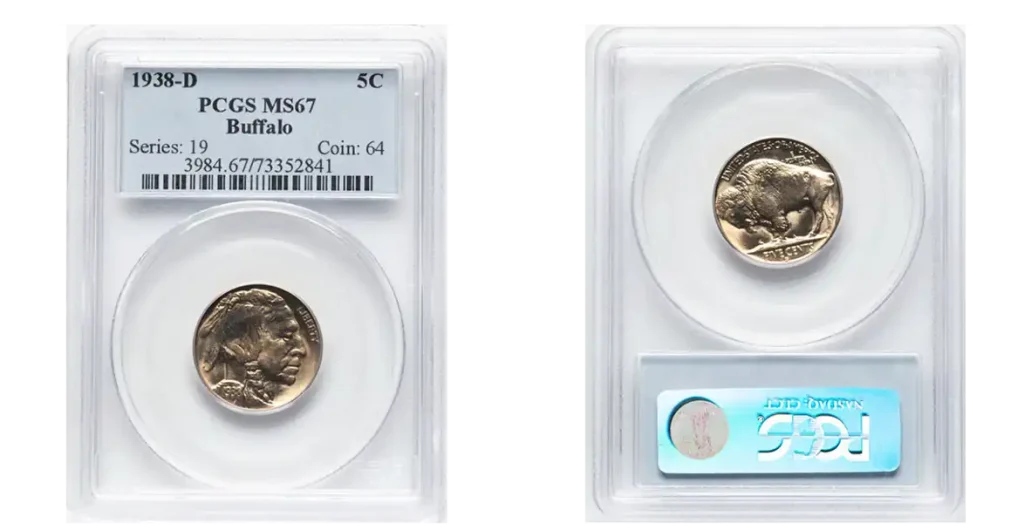
Indian Head Nickel Value Chart (2024 Prices)
Use this chart as a quick reference when you encounter an Indian Head nickel. Match your coin’s grade to the nearest category. Then compare your date and mint mark against the common dates or key-date examples. This process gives you an immediate ballpark estimate of its market worth.
Remember that values can shift with auction trends and silver prices. Check recent sales on reputable sites before finalizing any deal. You may find slight differences based on eye appeal, toning, or provenance. Always confirm current prices rather than relying solely on static charts.
For coins that fall between listed grades, consult a trusted grading guide or professional dealer. They can help you narrow down your coin’s exact condition. Precise grading often translates to more accurate valuations and a smoother buying or selling experience.
This chart summarizes current market values for common and key-date issues of the Indian Head nickel. It covers grades from circulated to high Mint State. Use these figures as a starting point when appraising your coins.
Knowing the value of Indian head nickel in various conditions helps you set realistic price expectations. Consult grading guides and recent sales to fine-tune these estimates before buying or selling.
| Grade | Common Date Range | Key Date Examples¹ |
| Good (G-4) | $0.50 | $10 (1913-S Type 2) |
| Very Fine (VF-20) | $1 | $15 (1926-S) |
| Extremely Fine (EF-40) | $5 | $25 (1937-D 3-Legged) |
| About Uncirculated (AU-50) | $10 | $40 (1926-S) |
| Mint State (MS-60) | $30 | $75 (1913-S Type 2) |
| Mint State (MS-63) | $60 | $200 (1926-S) |
| Mint State (MS-65) | $150 | $500 (1937-D 3-Legged) |
Most Valuable Indian Head (Buffalo) Nickels
Each example stands out for its rarity or unique features. Collectors seek these pieces to showcase in top-tier collections. Understanding their value helps guide bidding and purchase decisions.
We break down both date rarities and condition rarities. You will learn which dates fetch the greatest sums and why certain grades demand steep premiums. Use this guide to spot the truly elite Indian Head nickels on the market.
Key dates drive much of the value of buffalo indian head nickel market. Coins from certain years see heavy collector demand due to low mintage or famous errors. These rarities often appear in specialist auction catalogs and fetch premium bids.
Collectors focus on these dates when hunting series sets. They know that securing a key date greatly boosts the overall set value. Always verify authenticity before bidding on these high-end pieces.
1913-S Type 2 – $1,000–$10,000+
The 1913-S Type 2 issue commands top dollar among date rarities. It features a distinctive reverse with a high-relief buffalo. Only a small number survived in high grades, driving prices into the thousands.
Auction results show regular sales above $2,000 for well-preserved specimens. Even lower-grade examples often trade for over $1,000. Demand remains strong as collectors vie for this foundational series rarity.
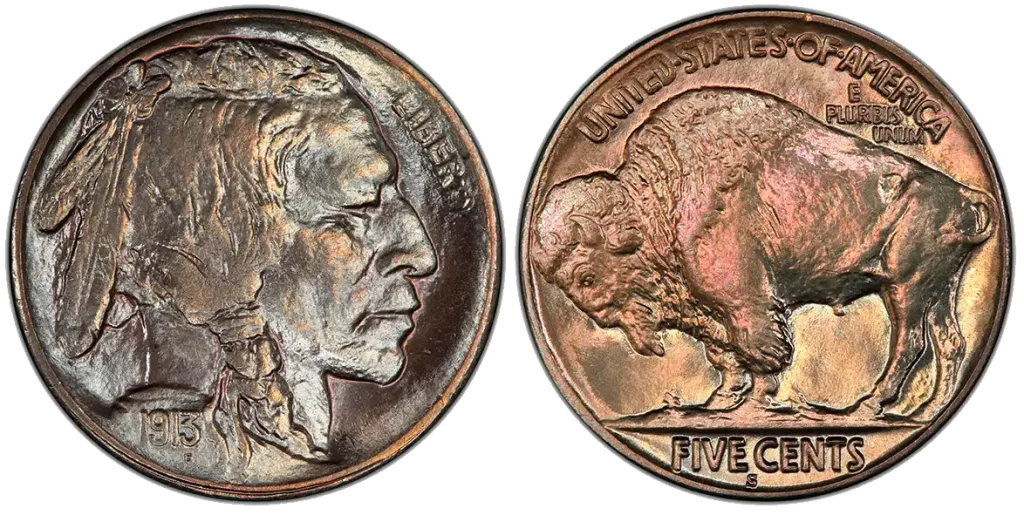
Only 1.2 million minted (rarest early date)
The initial 1913 mintage totaled just 1.2 million coins. That low output makes this date the rarest early issue. Many coins saw heavy circulation, leaving few high-grade survivors.
Collectors prize the few uncirculated examples above all. Those specimens often appear in major auctions and bring record prices. The scarcity of well-preserved pieces sustains long-term demand.
1926-S – $500–$20,000+
The 1926-S strike carries a mid-range mintage of 970,000 coins, but few survived in top condition. Circulated pieces fetch around $500. Uncirculated and prooflike survivors can exceed $10,000.
Collectors chase MS65 and higher grades for this date. Auction houses list fully struck, lustrous coins at premium starting points. Each sale reminds collectors of the series’ enduring appeal.
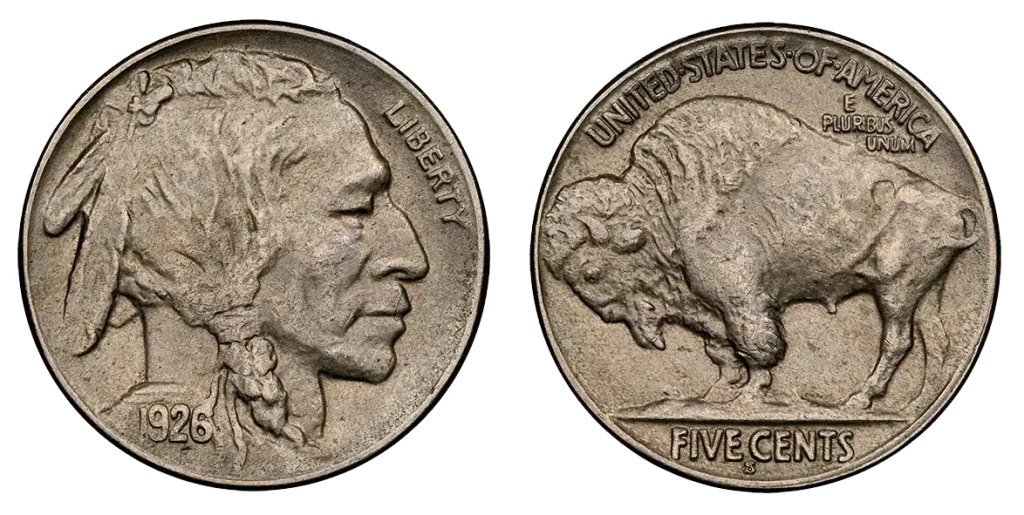
Low mintage (970,000)
The New Orleans Mint struck only 970,000 Buffalo nickels in 1926. That figure sits near the series’ lower production runs. It positions the date as a clear rarity for completionists.
Well-preserved examples are hard to find. Many brought back worn and nicked surfaces from decades of circulation. Surviving mint-state specimens remain the true gems for collectors.
1937-D 3-Legged Buffalo – $1,500–$50,000+
A polishing error removed the third leg from the buffalo’s reverse in 1937 at Denver. This “3-legged buffalo” variety ignited collector frenzy. Common grades can start at $1,500, while top-graded MS65+ coins fetch $50,000 or more.
Collectors study the die to confirm the missing limb. Strong provenance and clean pedigrees further boost auction performance. This error remains one of the series’ most famous rarities.
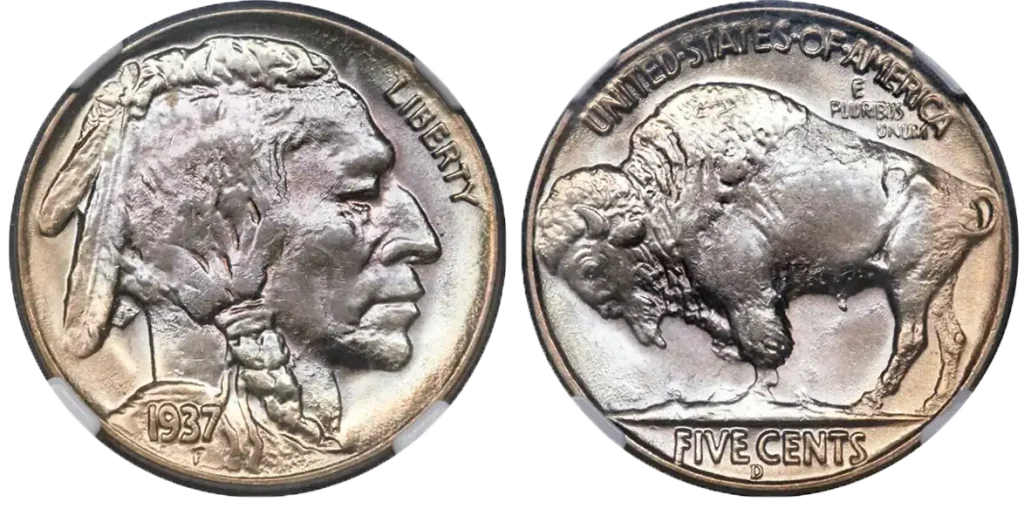
| Year | Mint Mark | Variety Description | Mintage | Value Range |
| 1913-S | S | Type 2 high-relief reverse | 1,200,000 | $1,000–$10,000+ |
| 1926-S | S | Low mintage New Orleans strike | 970,000 | $500–$20,000+ |
| 1937-D | D | “3-Legged” error from over-polishing | 12,500,000 | $1,500–$50,000+ |
Error coin (buffalo missing a leg due to overpolishing)
The leg-removal error resulted from over-polishing of the working die. Buffalo collectors quickly added this rarity to error-coin lists. Each example bears a telltale flat spot where the leg once stood.
Collectors compare multiple coins to rule out damage. They look for consistent flatness and polished die characteristics. True error pieces show uniform absence rather than random wear.
Condition Rarities
Condition remains a critical factor in this series. Even common dates can bring high premiums when found in exceptional grades. Collectors often pay 10–100× face value for pristine, uncirculated pieces.
Auction records show top grades commanding the spotlight. MS65 and above coins receive intense bidding. Knowing market benchmarks for condition helps avoid overpaying.
Full Date (No Wear) – Adds 50–200% premium
Coins showing full date details without wear earn major premiums. Collectors prize sharp numerals and complete date rims. These specimens can trade for 50–200% more than equivalent worn examples.
Clear date strikes also indicate strong die alignment and quality control. Many dealers list full-date coins as high-priority items. They serve as visual markers of superior preservation.
Full Horn Detail – Essential for top grades
Examination of the buffalo’s horn separation proves essential for grading. A fully separated horn shows crisp design relief. Coins lacking this feature lose significant value.
Collectors use magnification to confirm horn clarity. They exclude pieces with merged or worn horn areas. This step ensures accurate assignment of premium condition tiers.
Mint State (MS-65+) – Worth 10–100× more than worn examples
Mint State examples in MS65 or higher drive the highest values. These coins reveal full detail, original luster, and minimal bag marks. Collectors target these grades for investment and display.
Market data shows MS65 pieces trading at 10–20× face value. MS67 coins can surge to 100× or more. High-grade specimens often anchor collection highlights and auction headliners.
- Full Date (No Wear) – Adds 50–200% premium
- Full Horn Detail – Essential for top grades
- Mint State (MS-65+) – Worth 10–100x more than worn examples
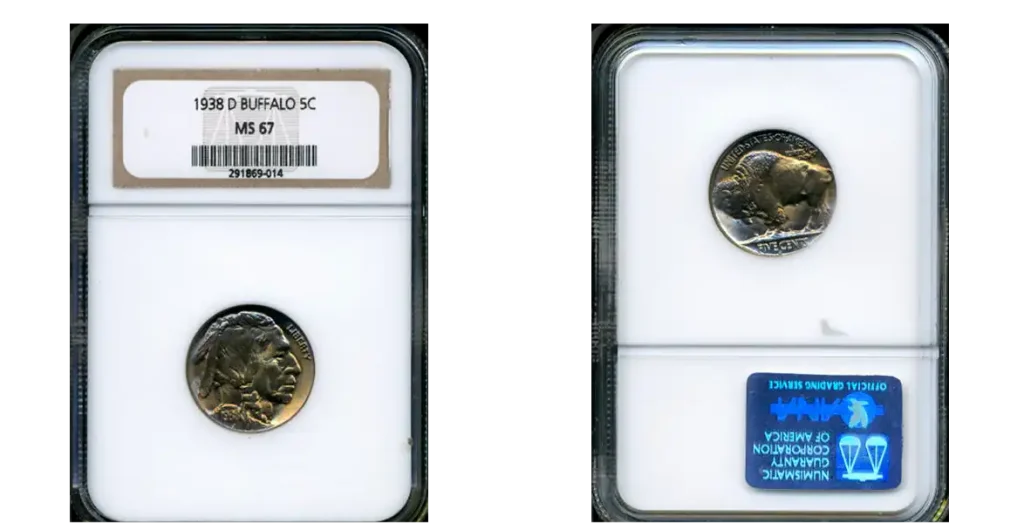
How to Identify a Valuable Buffalo Nickel
Identifying a high-value Buffalo nickel starts with a clear process. You need to inspect key design elements and verify mint details. Following these steps helps you avoid common pitfalls and spot coins that carry real collector premiums.
This guide covers three main checks: mint mark and date, horn and date detail, and error varieties. Each step uses simple observations you can make at home with a magnifier and good lighting. Apply them to every coin you evaluate to find the most valuable pieces. These checks also let you determine the value of nickel with buffalo and indian head.
Check the Date & Mint Mark
Look for the small letters below “FIVE CENTS” on the reverse side. A “D” marks coins from Denver and an “S” marks proofs from San Francisco. If there is no letter, you hold a Philadelphia strike.
Collectors track date and mint combinations to gauge the value of a indian head nickel. They know that certain dates like 1913-S or 1937-D carry significant premiums. Always compare your coin’s date and mark against a reliable rarity chart.
Steps to Verify Date & Mint Mark
- Hold the coin under bright light to reveal the mint letter below “FIVE CENTS.”
- Use a loupe to confirm the exact shape and position of the mint mark.
- Read the date on the obverse and note any wear or doubling.
- Compare your findings to a published rarity guide for key dates.
- Record the date and mint mark for future reference or sale listings.
Examine the Horn & Date
Turn the coin to the obverse and inspect the buffalo’s horn. A fully separated horn shows crisp die detail and boosts desirability. Weak or merged horns mean heavy wear or poor strikes and reduce market demand.
Next, check how sharply the date appears. A clear, bold date indicates a strong strike. Weak or partially missing numerals point to low-pressure minting or circulation wear. Sharp date and horn details often pair in the most sought-after pieces.
Steps to Assess Horn & Date Detail
- Angle the coin to catch light along the horn edge and reveal separation.
- Compare the horn tip to reference images of full-horn specimens.
- Inspect the date under magnification for clear, unbroken numerals.
- Note any smoothing or fading that may indicate circulation wear.
- Photograph both features side by side for documentation.
Look for Errors
Error coins in this series include the famous 1937-D three-legged nickel. You can also find rare 1916/1916 doubled-die reverses and odd off-metal strikes. Each error type attaches to specialized collector circles and commands premiums.
Use angled light to reveal die cracks or off-center images. Check for doubled letters or date numerals under magnification. Errors like these can push value far above standard listings. Always document any oddities before buying or selling.
Steps to Spot Error Varieties
- Rotate the coin slowly under bright light to highlight raised cracks or missing limbs.
- Inspect the entire design for doubled elements, especially around the date and legends.
- Feel along the edge for signs of off-metal strikes, like smooth planchet gaps.
- Compare suspected errors to verified examples in an error reference book.
- Log each error type and its severity for market valuation.
FAQ
How can I tell if my Buffalo nickel is silver?
Standard Buffalo nickels contain no silver. They use a copper-nickel alloy. Only special modern proofs (like 2005-S) use silver.
Should I clean my old Buffalo nickel?
No. Cleaning scratches the surface. It removes natural patina. That action usually lowers a coin’s value.
Why do some Buffalo nickels have no date?
Heavy wear can erase the date on the obverse. Many coins circulated hard. Over time the numerals wore off completely.
How much is a 1936 Buffalo nickel worth?
Circulated 1936 nickels trade for about $1–$3. Uncirculated pieces range from $20 to $100, depending on strike quality and grade.
Key Takeaways
- Most Buffalo nickels are worth $1–$50.
- Key dates (1913-S, 1926-S, 1937-D 3-Legged) are worth $500–$50,000+.
- Full horn & sharp date increase value significantly.
- Never clean coins—it ruins their collector value.